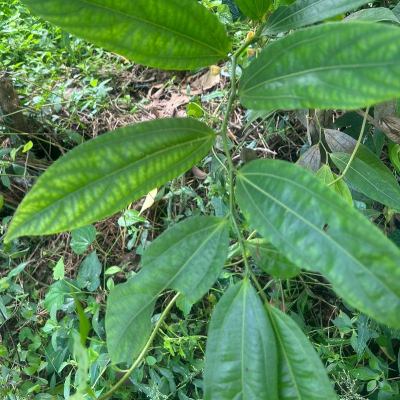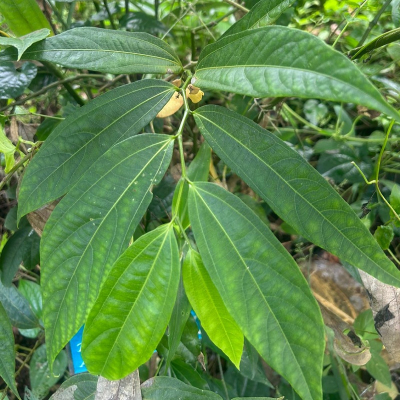Distribution and habitat: Throughout Kerala, India, Sri Lanka
Botany: Erect or rarely scandent slender shrub or under shrub, 0.5-1.5 m high, branchlets swollen at nodes, finely pubescent, bark smooth, yellowish.
- Leaves: Simple, distichous, 10-18 x 3.5-6 cm, oblong-lanceolate, entire, glabrous above, stellately pubescent and paler beneath, strongly 3- nerved from the base with reticulate veins between the nerves, subacute at the base, acutely acuminate at the apex. Petioles 0.2-0.5 cm long, stout.
- Flowers: Dark purple in axillary, irregular, few-flowered cymes. Bracts small, linear, acute, pubescent. Pedicels 1-2.5 cm long, densely pubescent. Perianth 3 – partite with each segment 0.2-0.3 cm long, broadly ovate or sub orbicular, pubescent, concave, fleshy. Stamens 5 in three groups, adnate to the style with hairy anthers; pistil with elongate, 4-loculed ovary, thick style column, and 3 or more linear stigmas.
- Fruit : Capsules 6-9.5 cm long, straight, obtuse, 4-gonous.
- Seeds: 3-gonous, up to 0.2 cm long, acute at both ends, deeply pitted.
Uses: It is used in diarrhoea, dysentery, often administered with lemon juice. Plant paste in oil used in chronic sores and ulcers.
Propagation: By seeds




